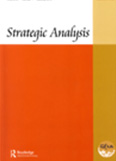Nuclear Terrorism: The New Terror of the 21st Century
Nuclear terrorism is the most serious danger the world is facing today. Terrorist groups like Al Qaeda and Aum Shinrikyo have expressed their interest in acquiring a nuclear weapon. The only way to prevent this is to secure nuclear materials from falling into the wrong hands.
- Published: 2013













